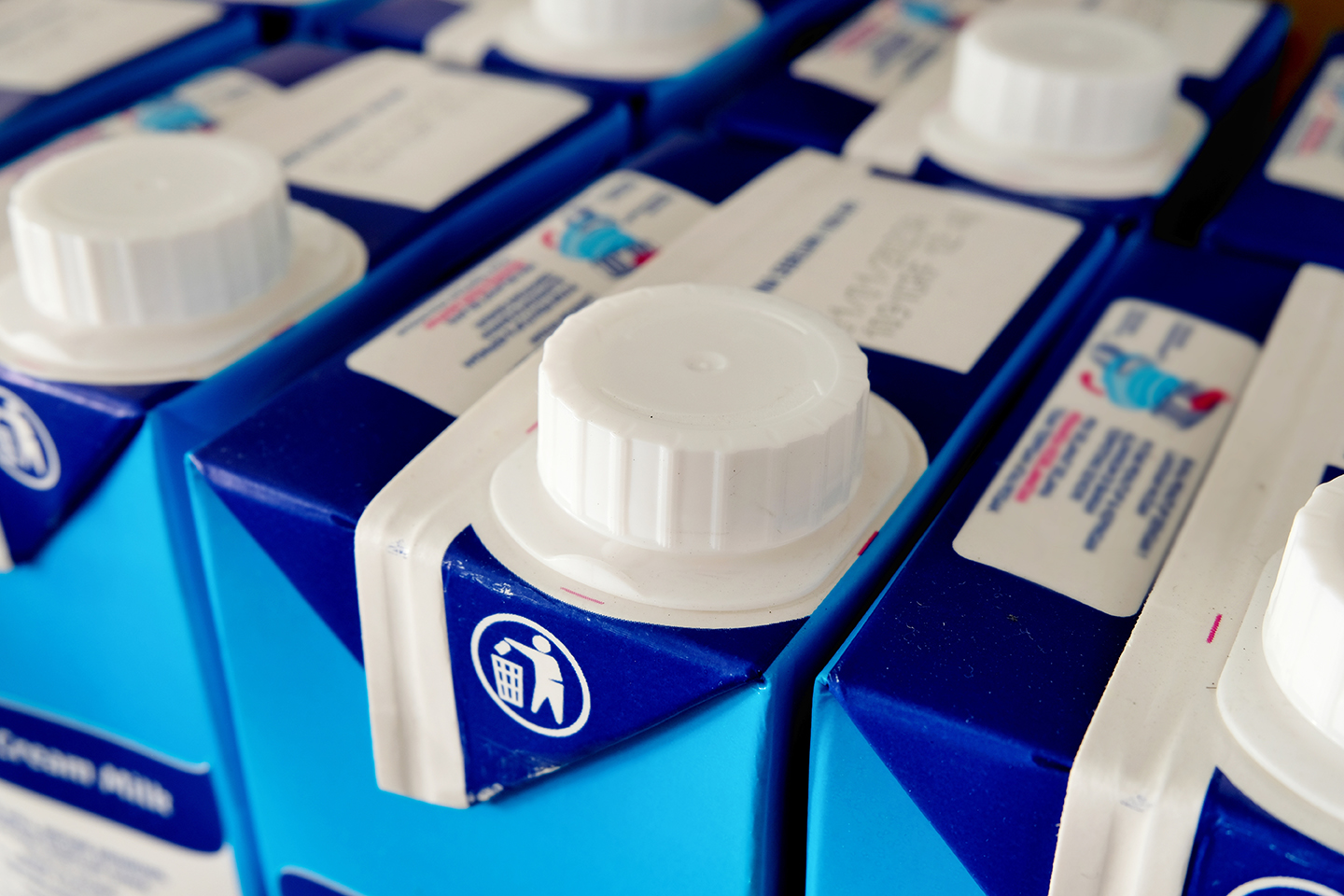Feature
Unpacking beverage carton sustainability
Cartons are a highly popular packaging type, making their successful recycling and reuse a key avenue for sustainability in the industry. By Claire Jenns.

Beverage cartons are recycled where adequate collection, sorting, and recycling facilities are available on a large scale. Credit: sweeann / Shutterstock
Cartons are often solely associated with the catch-all term of cardboard, referring to paper-based products.
The outer layer of paperboard visible to consumers feeds the general perception of beverage cartons as mono-material packaging.
However, the sustainability of mass-produced cartons is more complex, due to a combination of plastic, aluminium, and cardboard layers used to protect perishable and processed goods.
This article examines the hidden layers within cartons and efforts by industry leaders to ensure efficient recycling processes.
The complexity of carton manufacturing
Solutions for the primary packaging of liquids include brick cartons, gable-top cartons, and shaped cartons of varying thicknesses.
Cartons are typically used to contain liquid or semi-viscous products such as beverages, meaning they need to preserve flavour and protect against leakages, oxygen, and light to increase shelf life.
To meet these demands, cartons are coated with thin inner layers of plastic and aluminium bonded to the external paperboard with an adhesive.
Richard Hands, chief executive of the Alliance for Beverage Cartons and the Environment (ACE Ireland), explains that the use of materials depends on “whether the product is kept refrigerated or if it is distributed and stored at room temperature.”
These barriers also aid the durability of the packaging, as a carton made solely from paper-based material would become saturated when encasing a liquid, whereas sheets of plastic and aluminium offer waterproof protection.
Tetra Pak is a trailblazer in carton manufacturing. The company’s vice president of packaging materials, sales and distribution solutions Marco Marchetti confirms that “Our cartons use 70% paperboard, 25% plastics, and 5% aluminium.”
Cartons are an extremely popular packaging type, with statistics from ProCarton, the European Association of Carton and Cartonboard Manufacturers, showing that in 2023 over 6,000 tonnes of cartons were sold in Europe alone.
This makes the sustainability of cartons a significant goal for manufacturers. Marchetti asserts that “Innovating and evolving the composition of beverage cartons for ambient distribution is crucial to shift from energy-intensive, high carbon, fossil-based materials to low carbon, renewable ones, as they help us not to drain our planet of resources.”
Progress in carton recycling
Further down the value chain, mixtures of plastic, aluminium and cardboard materials in beverage cartons can present difficulties for underdeveloped recycling infrastructure and materials recovery facilities (MRFs).
Separating these materials involves size reduction, weakening the adhesive bonds between layers and separating them physically and/or chemically, which in turn uses high levels of energy and abrasive substances.
But for cartons that are predominantly made of paperboard, in some markets they can be sent to specialised paper mills to be mixed with water in a hydra pulper, either separately or with other types of paper, to extract the paper fibres and make paper pulp.
After extracting the paper fibres, the polymer and aluminium from the packages can be dewatered, packed in bales, and sent for recycling. The mixed material – commonly known as polyAl - can be recycled by itself or together with other plastic materials, replacing virgin plastics or other recycled plastics.
An industry collaboration between ACE Ireland and Panda recently achieved a milestone of five million beverage cartons recycled and sorted by robotic AI technology, providing grounds for hope for the renewability of cartons at scale.
The future of recyclable cartons
Tetra Pak is investing heavily in the research and development of carton packaging that is made with a simplified material structure and increased paper content.
“We are investing €100 million per year and will continue to do so over the next 5 to 10 years to further enhance the environmental profile of cartons. Our ambition is to have every used beverage carton collected and recycled and for none of them to become litter or go to landfill,” states Marchetti.
The company recently developed an aseptic beverage carton with a paper-based barrier, which it plans to launch industrial-scale production of by 2025.
On the consumer side for the separation of waste at source, Hands emphasises the importance of clear labelling and “investment in dedicated sorting technology and an expansion of dedicated carton reprocessing facilities” to improve carton recycling rates.
As well as this, Hands explains the carton industry’s target of achieving a 70% recycling rate by 2030 can be achieved by “policymakers setting sorting and recycling targets on a national and EU level, as we have seen in the recent EU PPWR (Packaging and Packaging Waste) legislation, and through improved sorting technology in MRFs.”
Marchetti echoes this call for systemic change. “Each actor has a critical role to play, from industry, the recycling value chain, governments, consumers as well as civil society.”
Uses for liquid cartons are expanding beyond beverages, as a survey by Elopak found that consumers in the UK and Germany are willing to purchase home and personal care products in paperboard cartons.
It is clear that through a multi-pronged approach, the development of mono-material cartons and a broader range of use cases, cartons can offer a consistently sustainable alternative to unrecyclable materials, bolstered further by their light weight.
In the meantime, packaging labels must make clear all of the materials that are used to manufacture cartons to avoid potential confusion for consumers and help simplify recycling streams.